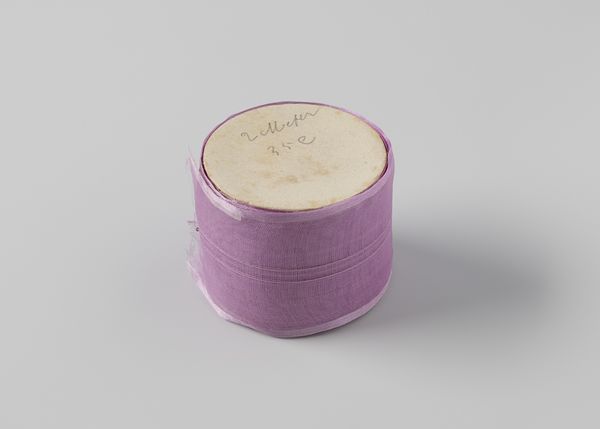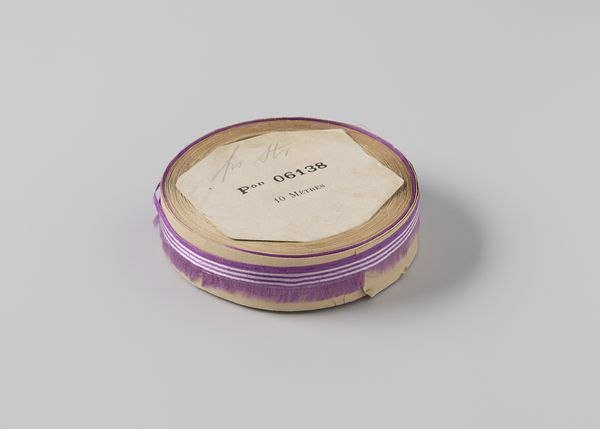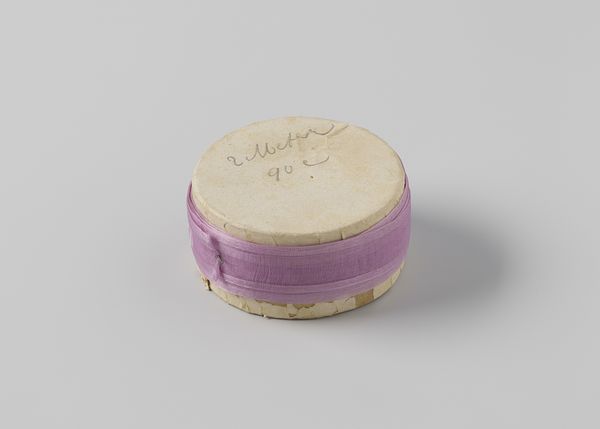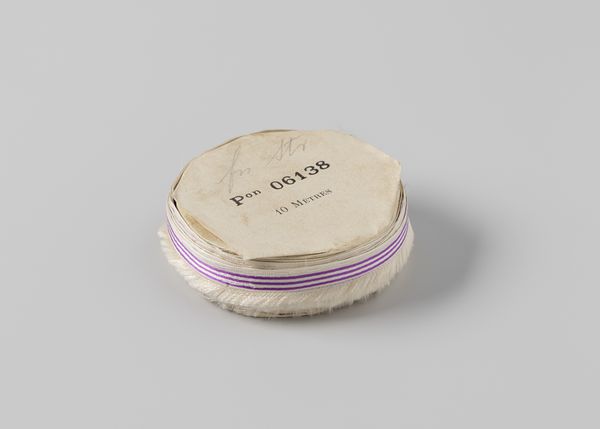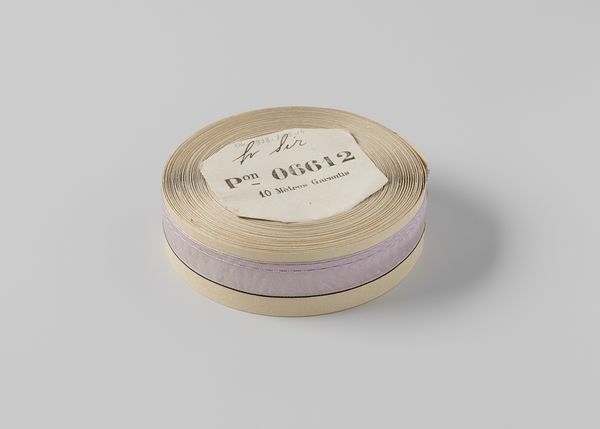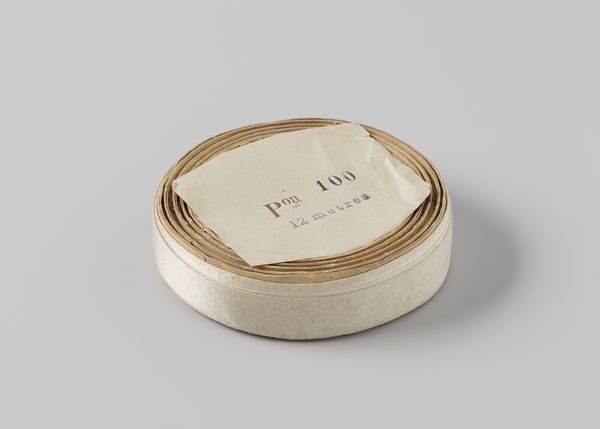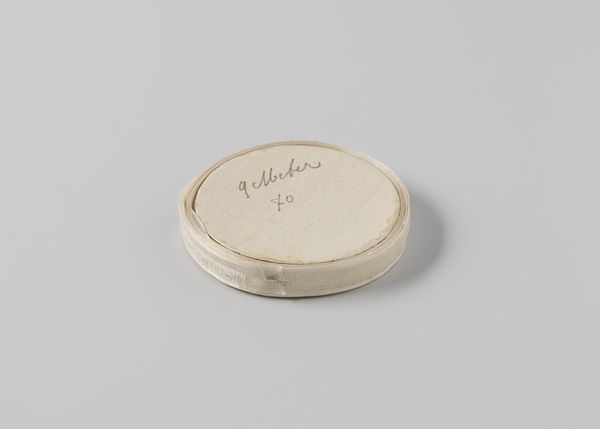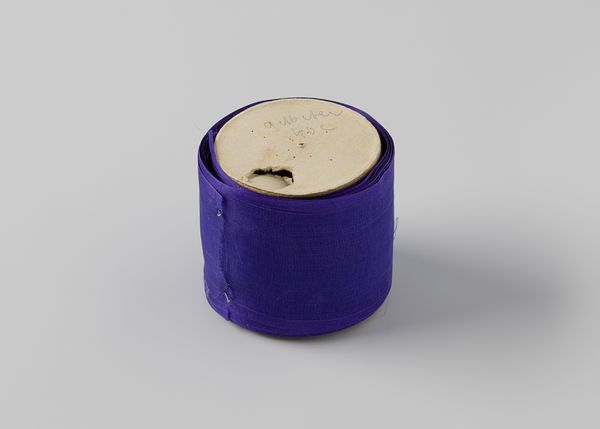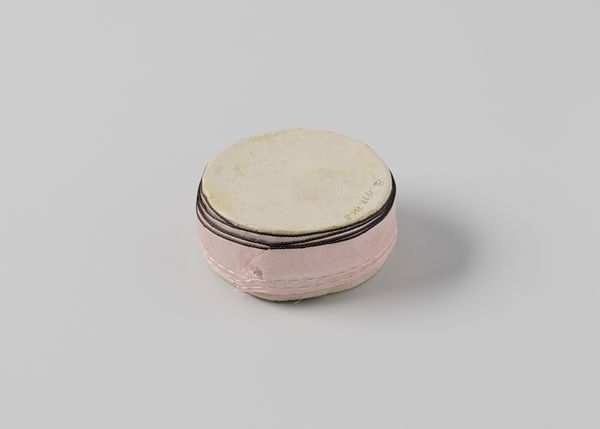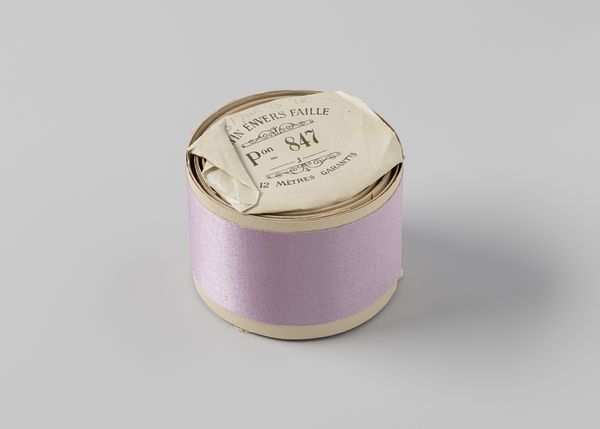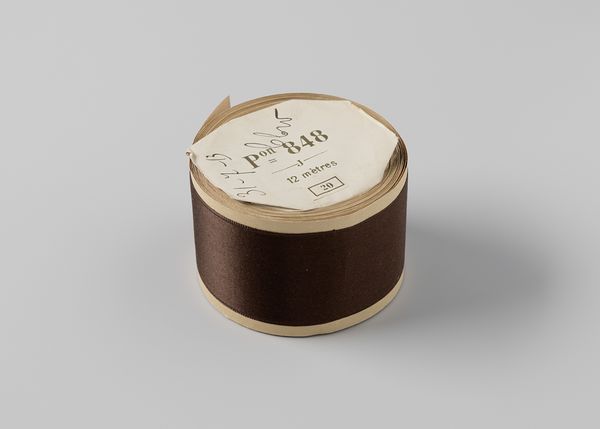
#
studio photography
#
product photograph merchandise
#
product studio photography
#
product shot
#
lifestyle product photography
#
product design photgrpaphy
#
metallic object render
#
graphic design product photography
#
product photography
#
3d rendered logo
Dimensions: length 1000 cm, width 3 cm, diameter 8 cm, height 3 cm
Copyright: Rijks Museum: Open Domain
Editor: Here we have "Lint van lila gaas," or "Ribbon of Lilac Gauze," dating from around 1900 to 1915. It's currently housed at the Rijksmuseum, and based on the photograph, appears to be a textile sample or product shot. It strikes me as surprisingly…mundane, given the time period. What am I missing? What's significant about a simple roll of ribbon? Curator: The very ‘ordinariness’ of the ribbon, especially captured in a product shot, offers an interesting window into the socio-economic landscape of the early 20th century. Consider the rise of consumer culture. Product photography played a crucial role in shaping desires and expanding markets. How do you think the act of photographing something as simple as ribbon changed its status, or the status of those who might use it? Editor: I guess it's about making the everyday seem aspirational? Showing how this ribbon could improve a garment, maybe suggest elegance, accessibility... advertising the concept of taste, really. Curator: Exactly! The image's composition reinforces that accessibility, presenting the ribbon as a desirable, yet attainable, luxury. Who was the target audience and how does the presentation appeal to that segment? This aesthetic wasn't just about pretty pictures, but the construction of an entire market. It reflects social stratification; buying this kind of product likely would only appeal to certain audiences. Editor: That makes me consider what social classes had the resources to access this. Is this a way to further separate based on style, or try to create an attainable dream for more women? This opens it up beyond a product image to me, it is also a moment in economic history. Curator: Precisely. By focusing on the production, distribution, and visual marketing, the lilac ribbon, no matter how plain, mirrors both class aspiration, but the rising forces of capitalism at the turn of the century. What’s your understanding of the social and political factors at that time? Editor: This makes me want to research other examples of advertising materials around the same time period. Thanks. Curator: Likewise. Thinking about mundane items expands how we consider art and public perception and how these products were considered aspirational.
Comments
No comments
Be the first to comment and join the conversation on the ultimate creative platform.
